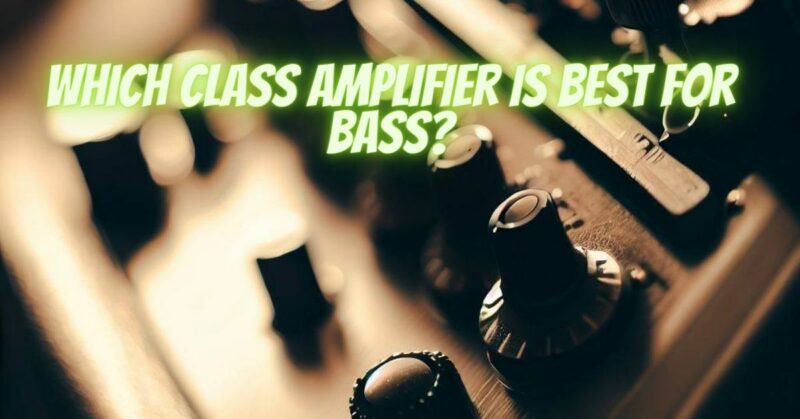When it comes to audio amplifiers, choosing the right class can have a substantial impact on the performance of your sound system, especially when it comes to bass output. The quest for deep, powerful bass that can make your music come alive is a priority for many audio enthusiasts. In this article, we’ll explore the different amplifier classes and determine which one is optimal for enhancing bass output.
Understanding Amplifier Classes
Amplifiers come in various classes, each with its own characteristics and advantages. The primary amplifier classes you’ll encounter are Class A, Class AB, Class D, and Class H:
- Class A: Known for their high-quality sound, Class A amplifiers have a continuous flow of current through their output transistors, making them less efficient but delivering pristine audio.
- Class AB: Class AB amplifiers combine the characteristics of Class A and Class B amplifiers, offering a compromise between efficiency and audio quality.
- Class D: Class D amplifiers, also known as digital amplifiers, are highly efficient and generate less heat. They use pulse-width modulation to replicate audio signals.
- Class H: Class H amplifiers are similar to Class AB but feature a higher supply voltage that switches based on the input signal, improving efficiency.
Which Amplifier Class Is Best for Bass Enhancement?
To determine the optimal amplifier class for enhancing bass output, we need to consider several factors:
- Power Efficiency: Class D and Class H amplifiers are highly efficient, which is advantageous for bass enhancement. They waste less energy as heat and can deliver substantial power to drive low-frequency signals.
- Dynamic Range: Bass frequencies often require a high dynamic range to reproduce accurately. Class D amplifiers, with their ability to switch rapidly and deliver precise voltage changes, excel in maintaining dynamic bass performance.
- Heat Generation: Class A and Class AB amplifiers generate more heat, which can be detrimental to long-term performance. Excessive heat can cause distortion and reduced bass response.
- Overall Design: The overall design of the amplifier, including the quality of components, circuitry, and power supply, plays a significant role in bass enhancement. A well-designed Class D or Class H amplifier can outperform a poorly designed Class A or Class AB amplifier in terms of bass output.
- Speaker Compatibility: Matching your amplifier with the impedance and power requirements of your speakers is crucial for optimal bass performance. Ensure your amplifier and speakers are compatible to avoid potential issues.
In the quest for enhanced bass output, Class D and Class H amplifiers often prove to be the most optimal choices. Their efficiency, ability to handle dynamic bass signals, and reduced heat generation make them well-suited for delivering deep, powerful bass. However, it’s essential to consider the overall design and quality of the amplifier, as well as its compatibility with your speakers, to achieve the best results. Ultimately, the right amplifier class for bass enhancement depends on your specific audio setup and preferences, so take the time to audition different options to find the perfect fit for your needs.


